

ICONS OF INDUSTRY Q&A: THOMAS B. HAGEN REFLECTS ON CAREER, IMPORTANCE OF GIVING BACK MBA SPECIAL EVENT: IMPACT LUNCHEON & FAIR TO BE HELD JULY 31
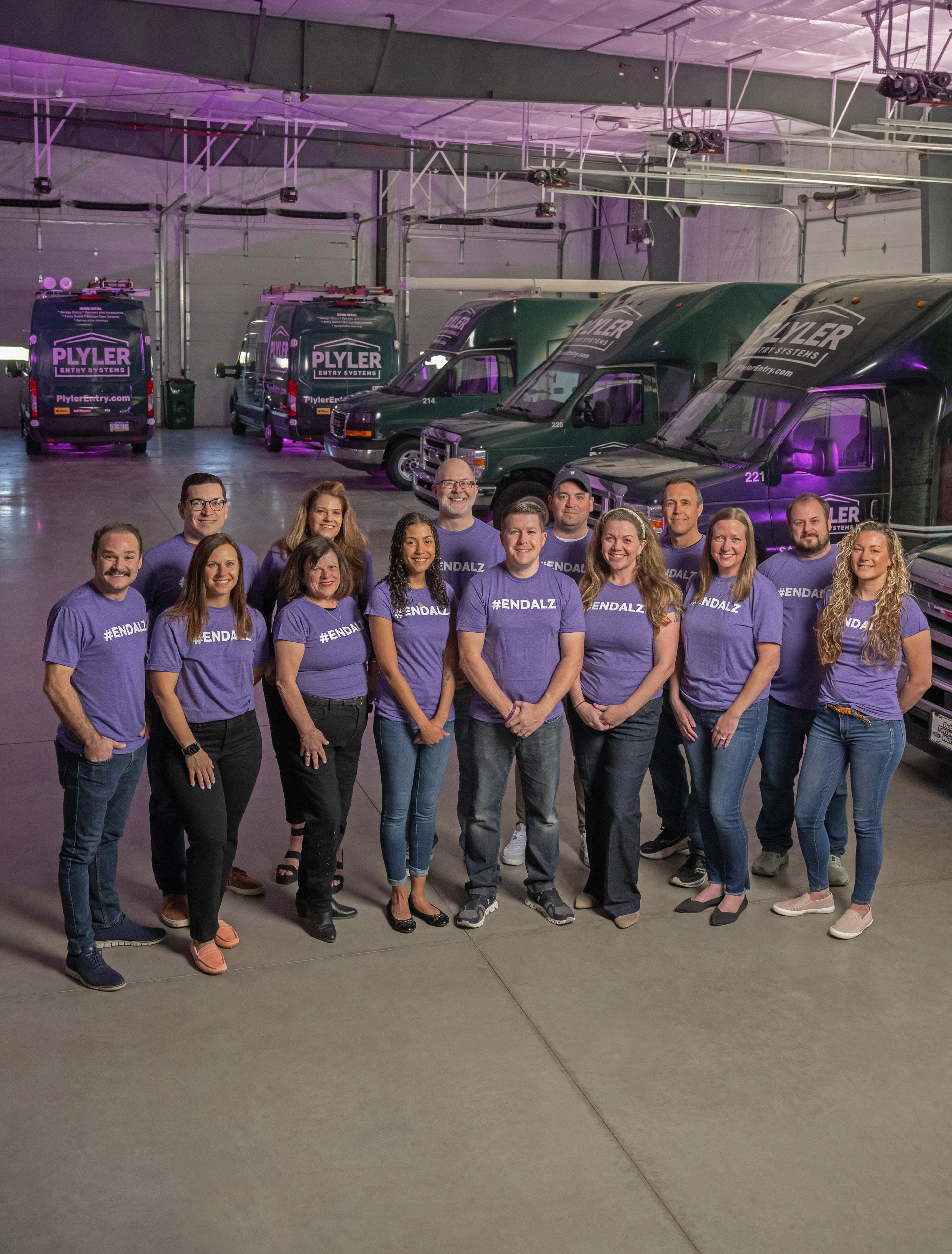




ICONS OF INDUSTRY Q&A: THOMAS B. HAGEN REFLECTS ON CAREER, IMPORTANCE OF GIVING BACK MBA SPECIAL EVENT: IMPACT LUNCHEON & FAIR TO BE HELD JULY 31


FOR UPCOMING SPECIAL EVENTS:
2025 CONFERENCE:
Succession planning: It’s stressful, difficult—and important. Join the Family Business Conference to hear from speakers and engage in networking opportunities to help you navigate succession conversations. Register at familybusiness.psu.edu.
October 8-9, 2025 | Bayfront Convention Center
MEMBER EVENTS:

Building and Leveraging a Family Business Brand
August 5, 2025 | Susan Hagen CORE, Penn State Behrend
International Trade and Marketing: The Building Blocks
September 8, 2025 | Susan Hirt Hagen CORE, Penn State Behrend

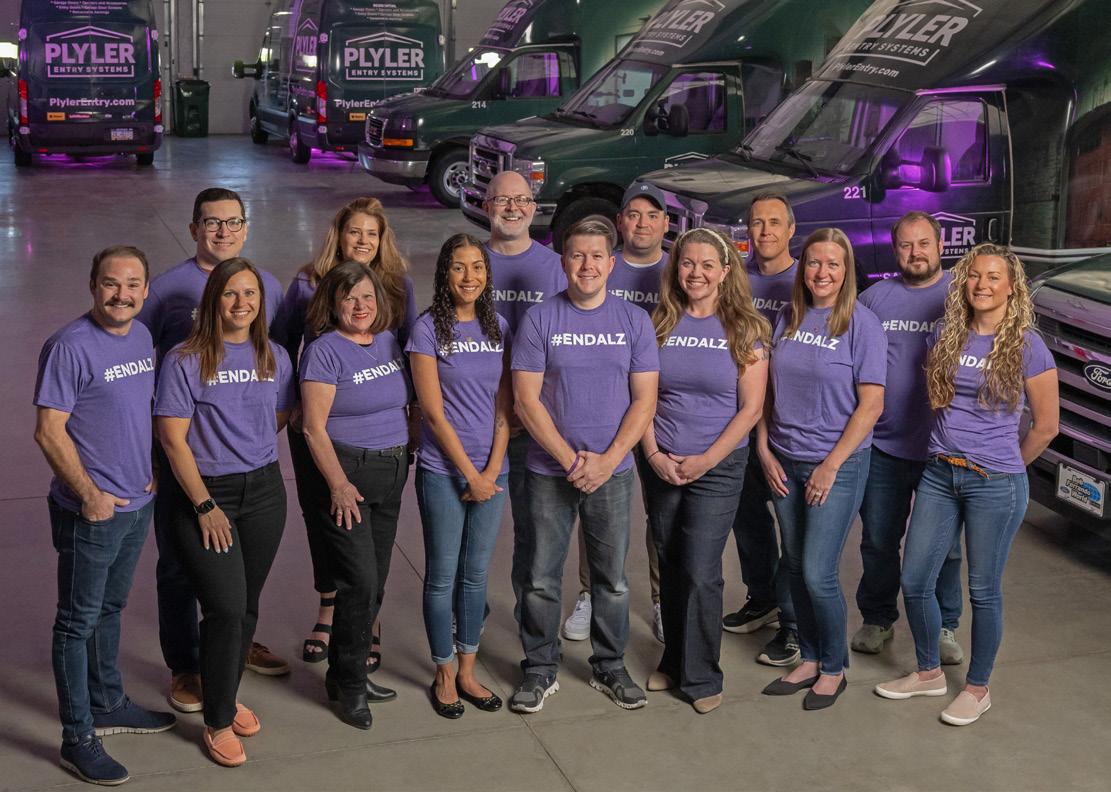
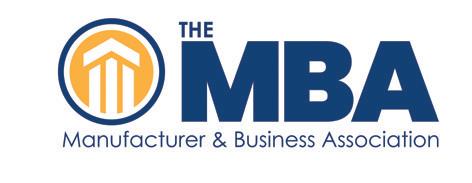
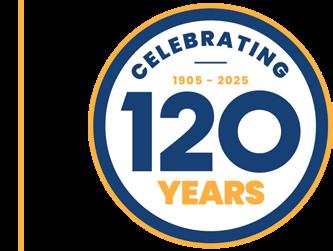

BUSINESS BUZZ WHAT’S NEW
PEOPLE BUZZ AWARDS AND PROMOTIONS
HR CONNECTION WORKPLACE TRENDS
HR Q&A GET ANSWERS
Executive Editor
Karen Torres ktorres@mbausa.org
Contributing Writers
Eileen Anderson
Brian Cressman
Kim Figurski
Robb Frederick
Jeff Grejda
Matthew S. Klunk
21 NETWORKING AND MORE
See what’s happening at The MBA and with members in our region.
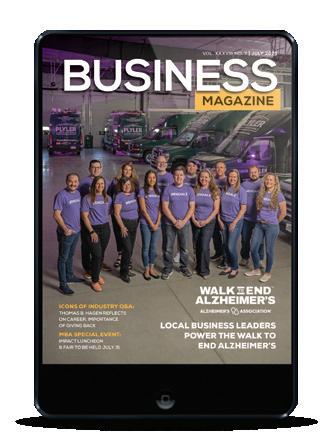
READ ON THE GO!
For the most current Business Magazine updates, visit mbabizmag.com


Feature Photography R. Frank Media
Additional Photography Erie Insurance iStockPhoto.com
Matt Zimmerman
Sean Pavone / iStock Photo Design, Production & Printing Printing Concepts Inc. info@printingconceptsonline.com
Advertising Sales
Shawn Netkowicz snetkowicz@mbausa.org
Judy Rosatti jrosatti@mbausa.org
Patty Welther pwelther@mbausa.org
On the Cover: Erie Walk to End Alzheimer’s Executive Leadership Team (front row, from left): Will Bloomstine, Insurance Management Co.; Stacey Santos, RE/MAX; Melanie Titzel; Lake Erie College of Osteopathic Medicine; Amber Beason, Alzheimer’s Association; Kyle Strayer, Erie Strayer; Sara Giammarise, Alzheimer’s Association; Paige Boesch, Plyler Entry Systems; and Bridget Merriman, ERIEBANK. Back row, from left: Eric Nicastro, Erie Insurance; Shari Robinson, Forte Marketing; Robb Frederick, Penn State Behrend; Drew Whiting, Erie Downtown Development Corporation; Greg Coleman, Erie SeaWolves; and Rob Frank, R. Frank Media. Not pictured: Rob Webster, Taco Bell, and Matthew Bresee, ActionCOACH Erie. For full story, see page 4.
Mission Statement: “We
Manufacturer & Business Association Headquarters: 2171 West 38th Street, Erie, PA 16508 Pittsburgh: 850 Cranberry Woods Drive, Suite 2224 Cranberry Township, PA 16066 814/833-3200 | 800/815-2660 | mbausa.org
WHAT’S INSIDE | FEATURED STORY
3 MAKING A DIFFERENCE
The MBA’s Nonprofit, Education and Economic Development IMPACT Luncheon & Fair on July 31 is a great place to learn about ways to get involved.
COVER STORY | LOCAL PROFILE
4 ALZHEIMER’S ASSOCIATION
Local leaders power the walk to end Alzheimer’s.
ICONS OF INDUSTRY | Q & A
6
MBA Icon of Industry Thomas B. Hagen, chairman and a former CEO of the Fortune 500 company Erie Insurance Group and chairman of Custom Engineering Co., reflects on his career and the importance of giving back.
LEGAL BRIEF | ECONOMIC DEVELOPMENT
9
CRIZ Authority: A game changer Brian Cressman ON THE HILL | RESOURCES
12
The MBA’s State Energy Position & Policy: Pennsylvania businesses need abundant, affordable and reliable energy. Eileen Anderson
ENERGY UPDATE | UTILITIES
13
What’s behind that electric bill hike? The factor you need to know. Jeff Grejda
17 ERIE PHILHARMONIC
How the Philharmonic is strengthening the community and region by providing high-quality live orchestra concerts and programs that enrich, entertain and educate people of all ages.

In three days or less*, your employees and their families can be seen by a mental health professional. With Highmark Blue Cross Blue Shield’s expanded mental health services, they can get the care they need in person or virtually, while you get a healthier bottom line.
Help your employees get back to feeling their best, faster.
Employers are a major part of the economic vitality of the region. These job creators provide a huge boost to the local economy and their employees, but often their impact extends well beyond their workplaces and industries, and into the communities in which they operate through their support of economic development, active involvement and engaging outreach efforts.
For many, supporting local nonprofits and community causes isn’t just a nice thing to do — it’s good for business. A 2024 study found that companies with active volunteer programs saw 50-percent lower employee turnover and a 15-percent increase in productivity. Workers who volunteer are also 28-percent more likely to be promoted and 40 percent more likely to get a raise within a year. These numbers show that when companies give their employees a chance to give back, everyone benefits.
Volunteer programs also help employees build new skills. In a national survey, 92 percent of human resource leaders said volunteering helps people grow professionally. Whether it’s leadership, teamwork or communication, people gain valuable experience outside the office that they bring back to their jobs. For today’s workforce, especially in manufacturing, education and small business, these are skills that matter.
Community involvement also builds stronger teams. Volunteering together boosts morale and creates a sense of purpose and pride. Employees feel more connected to each other and to the place they live and work. That sense of
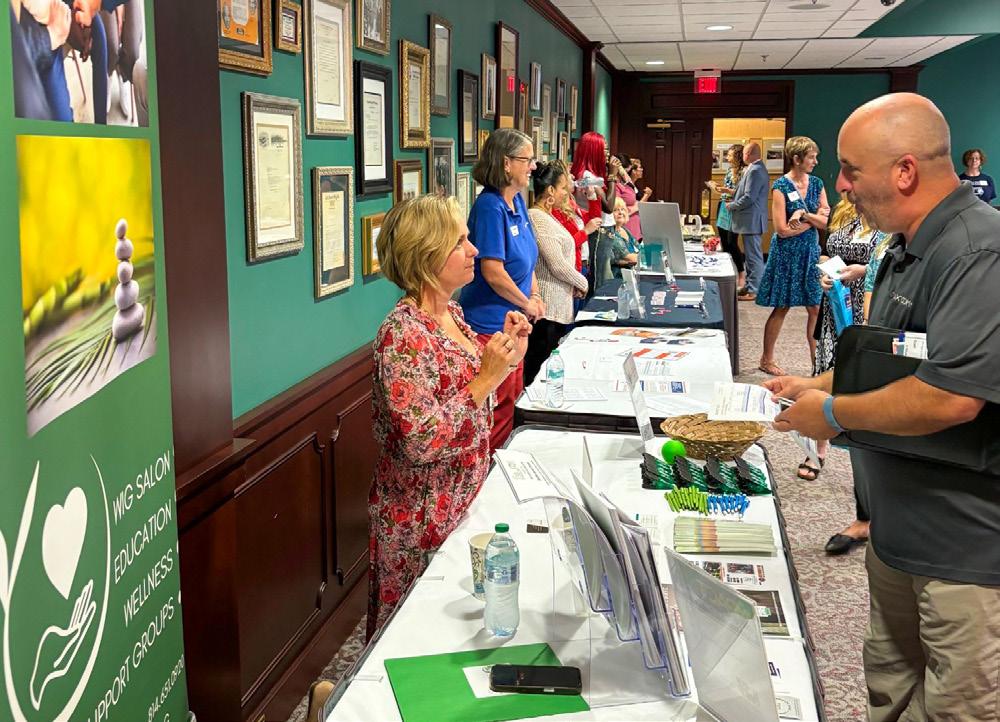
belonging leads to more satisfied and committed workers.
In this issue of The MBA Business Magazine, we’ll showcase many of the organizations and opportunities to get involved, including the Erie Walk to End Alzheimer’s. We’ll also hear from MBA Icon of Industry Thomas B. Hagen on his career and the importance of giving back.
For businesses in the region, The MBA’s Nonprofit, Education and Economic Development IMPACT Luncheon & Fair on July 31 is a great place to start.
It’s a chance for employers to meet local nonprofits, educational institutions and economic development groups that are making a difference in the region. It’s also a way to find meaningful ways for your team to get involved — whether

through service projects, mentoring or educational partnerships.
Investing in the community doesn’t require a big budget or a large staff. It starts with showing up, listening and finding ways to help. The July 31 IMPACT Luncheon & Fair, with a special keynote address by Ben Wilson, Ed.D., chief executive officer of the Greater Erie Community Action Committee (GECAC), offers a simple first step for companies ready to take action.
When businesses support their communities, everyone wins. When our community grows stronger, employees thrive, and workplaces become more connected to the world around them.
To register or to learn more about the July 31 IMPACT Luncheon & Fair, visit mbausa.org.

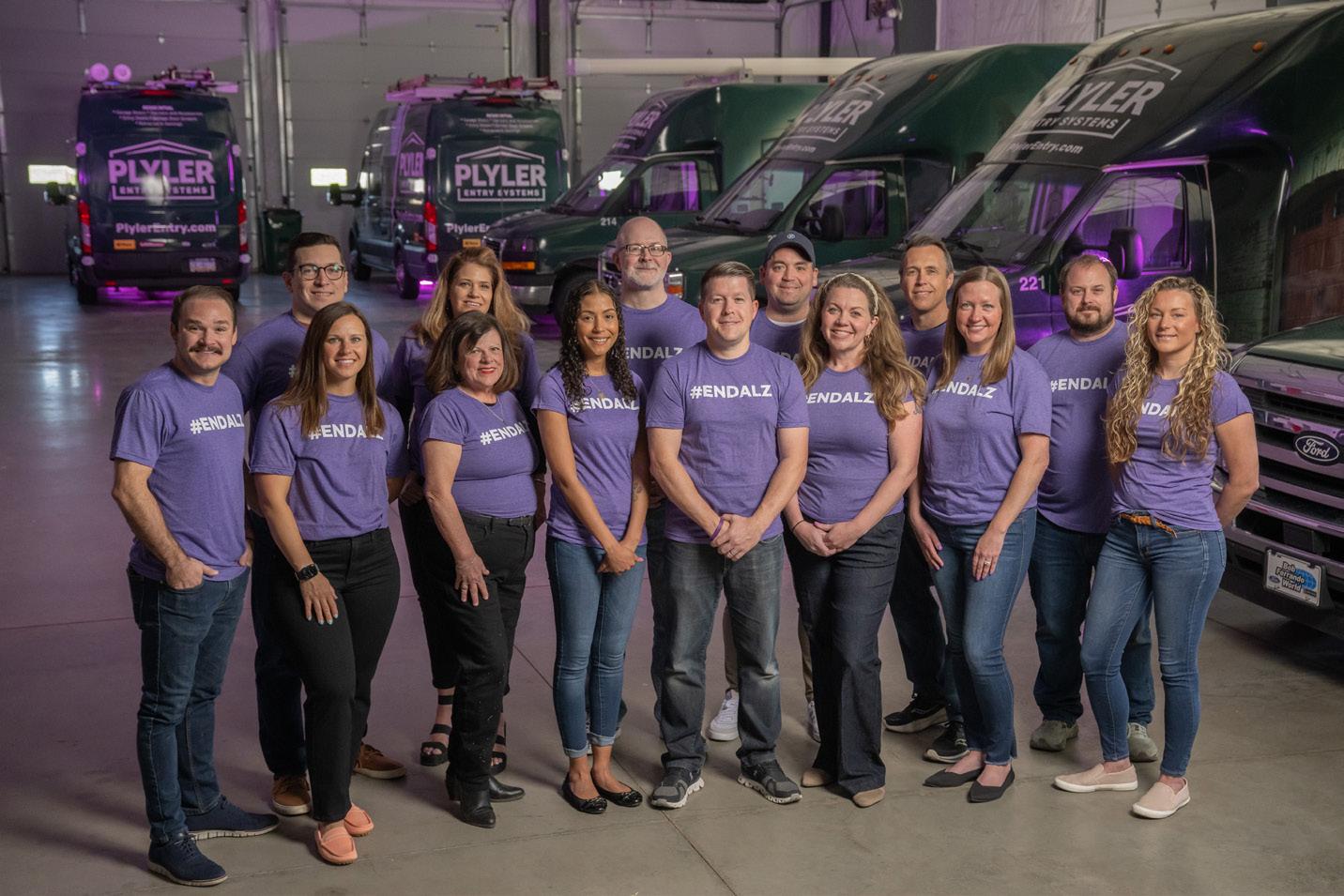
It takes maybe 40 minutes to complete the Erie Walk to End Alzheimer’s, a flat, two-mile out-and-back journey from Perry Square to Gridley Park. It takes nearly a year to coordinate the event, secure corporate sponsorships, and bring together the teams that make it all possible.
The Erie Walk to End Alzheimer’s — scheduled for Saturday, September 20 — is set to raise $200,000 this year. These funds support families that are facing Alzheimer’s, a progressive neurological disorder that affects more than 7 million Americans, including one in three seniors. It also drives research that can improve the understanding of the disease, impact risk reduction, diagnosis and treatment — such as two new treatments, and a blood biomarker test for early detection that have been approved by the U.S. Food and Drug Administration.
In Erie, the volunteer executive committee sets the bar high for what successful volunteer engagement looks like.
This volunteer group includes business owners and representatives across multiple
industries, and has shaped the fundraising efforts for the Alzheimer’s Association.
“Our volunteer executive committee is the engine behind the Erie Walk’s success,” said Sara Giammarise, senior development director for the Alzheimer’s Association. “These leaders bring fresh ideas, strong networks and a shared commitment to the cause. Their dedication has more than doubled our local impact and set a new standard for what volunteer leadership can achieve.”
This year’s executive chair is Shari Robinson, co-owner of Forte Marketing and Mighty Fine Donuts. Her father, Douglas Robinson, died in 2023 after a 10-year fight against Alzheimer’s.
“This disease brings so many twists and turns,” Robinson said. “It just hits you, again and again and again, with these setbacks. You watch this person who means so much to you just slip away: They forget things, and then they forget you. Eventually, they stop talking. Then they stop walking. It keeps hitting you with something new before you have adjusted to the last change.”
As her father’s condition deteriorated, Robinson kept much of that struggle
Erie Walk to End Alzheimer’s Executive Leadership Team (front row, from left): Will Bloomstine, Insurance Management Co.; Stacey Santos, RE/MAX; Melanie Titzel; Lake Erie College of Osteopathic Medicine; Amber Beason, Alzheimer’s Association; Kyle Strayer, Erie Strayer; Sara Giammarise, Alzheimer’s Association; Paige Boesch, Plyler Entry Systems; and Bridget Merriman, ERIEBANK. Back row, from left: Eric Nicastro, Erie Insurance; Shari Robinson, Forte Marketing; Robb Frederick, Penn State Behrend; Drew Whiting, Erie Downtown Development Corporation; Greg Coleman, Erie SeaWolves; and Rob Frank, R. Frank Media. Not pictured: Rob Webster, Taco Bell, and Matthew Bresee, ActionCOACH Erie.
to herself, as do many of the 12 million Americans who provide unpaid care.
After a powerful meeting with Erie Walk Manager Amber Beason about the importance of volunteer leadership, Robinson agreed to sit in on a meeting of the executive committee for the Erie Walk. The volunteers she met there once again shifted her perspective on the disease.
“We went around the table, and everyone shared their story, and I immediately felt



“I think it’s important for a business to give back,” she said. “Without this community, we wouldn’t have a business.”
the depth of that connection,” Robinson said. “I didn’t know how much I needed to be with other people who understand this experience.”
That sense of shared understanding was echoed by Rob Frank, the owner of R. Frank Media, who spoke about his father, Bob Frank, who passed away in 2017. Frank chaired the Erie Walk in 2022 and 2023. He also serves on the Greater Pennsylvania Chapter Community Board of Excellence.
“People sometimes look at these Walks and think, ‘I have to donate $10,000 to be impactful,’” he said. “That absolutely is not the case. In a community like Erie, every little bit makes a difference.”
“We walk to acknowledge the challenges that all these people face,” Frank said. “Those little acknowledgements mean so much, both during the Walk and in the celebration afterward, when two people with yellow flowers — both of them caregivers — start a conversation. That’s the first step toward a network of support.”
For Paige Boesch, co-owner and vice president of Marketing at Plyler Entry Systems, that network of support is deeply personal. Paige volunteers and walks for her grandfather, Dean Aggers. He was a captain in the U.S. Marine Corps. Today, he lives at Manchester Commons in the Memory Unit.
Aggers recognizes her, but he often asks about the ring on her finger. He doesn’t remember her wedding, which was in 2021.
“I go to these committee meetings, and I see this amazing group of people with so many different strengths,” Boesch said. “Every one of them could say, ‘I’m too busy for this,’ but they find the time. They make themselves available.”
Boesch has built new connections within the group, expanding her own network in the process.
For Robinson, this year’s walk chair, that bond is real.
“The passion that everyone brings to this is so inspiring,” she said. “You want to match that. You want to support it and help it grow. And you very quickly see that by honoring your person, you can do so much more.”
As the committee has expanded, its members have identified new ways to support the Erie Walk to End Alzheimer’s, but there are no plans to slow the momentum.
Editor’s note: If this article resonates with you, please reach out to volunteer with the executive committee in Erie, or in one of the 600 Walk events that take place across the country, 21 of them right here in Greater Pennsylvania.
Join the Erie Walk to End Alzheimer’s on September 20 and be part of something powerful.
Whether you walk in honor of a loved one, in support of caregivers, or as an advocate for change, your presence matters. Now is the time — register, donate, volunteer and walk to show that Erie stands united in the fight against this devastating disease.
If you or a loved one is impacted by dementia and you need support or have questions, the Alzheimer’s Association 24/7 Helpline — 800272-3900 — is available all day, every day.

Presenting Sponsor:
LECOM Health
Local Sponsors: Erie Strayer
Widget Financial
Erie SeaWolves
Tim & Lisa NeCastro
Trinity Elder Law
Plyler Entry Systems
Forte Marketing
Mighty Fine Donuts
Odis 12
Techworx LLC
Sports Obsession
GECAC
Insurance Management Company
KeyBank
Hardinger Integrated Logistics
R. Frank Media
Event Day Sponsors: Knox Law Firm
National Fuel
Scott Enterprises
MacDonald, Illig, Jones & Britton LLP
Asbury Springhill
Senior Helpers - Erie
To learn more about the ERIE Walk and other Walks to End Alzheimer’s, visit:
2025 Walk to End Alzheimer’s® Greater Pennsylvania Chapter
2025 Walk to End Alzheimer’s - Erie, PA


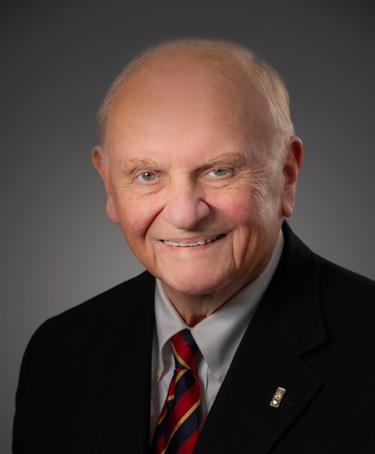
As part of its 120th anniversary celebration, The MBA is recognizing leaders of longtime member organizations who have contributed to the regional business community. Thomas B. Hagen has built a remarkable legacy through his leadership in business and his deep commitment to economic development and philanthropy. He is chairman and a former CEO of the Fortune 500 company Erie Insurance Group and is also the chairman of Custom Engineering Co. A retired U.S. Navy Reserve Captain, Hagen also served under Governor Tom Ridge as Pennsylvania Secretary of Commerce and as the first secretary of the Department of Community and Economic Development (DCED).
In addition to these roles, Hagen has helped drive growth by emphasizing the importance of community involvement. In 2024, Hagen received the 125-year-old Pennsylvania Society’s highest honor, the Gold Medal for Distinguished Achievement. He established the Susan Hirt Hagen Center for Transformational Philanthropy at The Erie Community Foundation where he is a former trustee. He also has taken an active role in the revitalization of Erie’s historic neighborhoods and has earned several awards for his restoration efforts, including the Otto Haas Award for outstanding individual achievement from Preservation Pennsylvania and the Pennsylvania Historic Museum Commission. Here, Hagen, who will celebrate his 90th birthday in September, reflects on his career and the importance of giving back.
Throughout your more than 60year career, you’ve demonstrated exceptional leadership across multiple sectors. How has your approach to leadership shaped the organizations you’ve worked with?
I try to be a servant leader and lead by example. I think those are pretty important things for the leadership at any organization. I’ve been so imbued in working with Erie Insurance that I try to follow their values, which includes the Golden Rule. I think it’s just plain decency and common sense to treat others as you would like to be treated. You’ve been known to minimize your influence, but what are you most proud of when it comes to business decisions you’ve made that have had lasting impact?
Staying in Erie and contributing to the Erie community. Some years ago, back in the 1980s, when we were about to build our signature building for Erie Insurance, the F.W. Hirt-Perry Square Building, we had an opportunity to move our headquarters closer to the center of our operations — to Pittsburgh or even south of Erie in a more suburban location like so many corporate headquarters have done across the United States. But we made the conscience decision of staying here in downtown Erie, where Erie Insurance has been located since 1925 when it started at 10th and State, and in 1938 moved to Sixth and French. We felt, after a thorough analysis, that was best for us and best for the community where we live.
And Custom Engineering?
I bought the company in 1997. The prior owners had opportunities, and I’ve had opportunities since then, to sell it to other out-of-town firms that wanted to consolidate their expertise in fabrication. But we’ve made a very deliberate decision to stay in Erie and thrive in Erie. The management under Dave Tullio’s leadership has been committed to that as well. I’ve been transferring principal ownership to him, so the company will remain here under an Erieborn-and-bred leader. Our management and our board at Custom are committed to staying in Erie.
What is one of your favorite memories from your professional career and why?
My professional career in a way really started in the U.S. Navy after I graduated from college (after attending Penn State Behrend and graduating from The Ohio State University). I have to say that, as a young naval officer, I had responsibilities for personnel and materiel in my early twenties that I would never get at that age in the private sector. I’ve had similar conversations and agreement with two other former Erie residents and former naval officers about this — Strong Vincent grad Henry Schacht, who was one of the youngest CEOs of Cummins Engine of Columbus, Indiana, and the first CEO of Lucent Technologies, and Craig McClelland, who was the last CEO of Hammermill Paper Co.
Beyond that, it’s the influence of H.O. Hirt because he had an entrepreneurial view of things. He started Erie Insurance in 1925 and ran it for its first 50 years. I had the good fortune to work with him in his last 30 years and learn from him. What I learned is more of an entrepreneurial spirit and a commonsense approach to things — a “Keep it simple, stupid” philosophy.
What is the best leadership advice you ever received?
Again, this starts with the Navy. It’s to take care of your crew — take care of the people who work for you and give credit to others. In my view, no decent leader gets to be a leader and stay a leader unless they give credit to the people who make it possible for them to be a leader. No single person makes everything happen. You need teamwork behind you to accomplish what you want to accomplish.
How has your experience in business influenced your approach to philanthropy? Are there any particular experiences that have shaped your views on giving back?
It’s a total accumulation of life experiences. I’ve been working since I was 9 years old, and I paid my way completely through college. Many of those jobs were pretty common tasks — waiting on tables, operating a refreshment stand push cart at the Public Dock in the summer, painting houses, a paper route — that put me in touch with
ordinary people, so I got to know the trials and tribulations of people living from hand to mouth, and some not even being able to do that without some public or private assistance. That really has shaped my approach to philanthropy.
What role do you believe business leaders should play in getting involved and giving back, and what advice would you offer to others seeking to make an impact?
Erie is a really nice place to live, and it’s a good place to raise a family and be able to get around and have many of the amenities of a bigger city without having all of the congestion problems of a bigger city, but we do have problems. We do have poverty issues, particularly with children, that need to be addressed. I would hope that a business leader who has been successful and accumulated some wherewithal will reach out and consider helping make this a better community. There’s always room for improvement.
You are helping preserve and develop some of Erie’s historic neighborhoods along with revitalizing the downtown area. What do these efforts mean to you and the city’s future?
I would hope we all take pride in the place we live and, when we see something that is going wrong or deteriorating, that we will try to do something to improve it, whether

it’s through influence, volunteer work or philanthropy.
I’ve always been interested in architecture and history together. For the first few years of my life, I lived on West Sixth Street, and I knew those buildings along the stretch from Peach to Gridley Park very well. To see them in decline, many of them designed by leading regional architects like E.B. Green of Buffalo, Frank Meade of Cleveland and Joseph Frank of Erie, I had the wherewithal and the interest to do something. But there’s a lot of other things that people can do in improving their neighborhood — using some paint where needed, cutting the grass, trimming the bushes. That’s all manual labor, by and large, and doesn’t take a lot of expense to help take pride in their city.
I’m glad to see that work is being done on the old West 12th Street industrial corridor, particularly by the Erie County Redevelopment Authority on the old EMI facility on 12th and Cherry, and by others along 12th Street, because it is an entryway into our city.
Is there anything you’d like to add?
I have developed a family motto of “Semper Serviente” — in Latin meaning “always serving.” Our family has done that over the years, and it’s being carried on, particularly by my daughter, who is a part-time resident of Erie and who is connected to the needs of Erie.
I know there’s skepticism about leadership roles in government and corporations by young people today, but I hope, as they mature, that their outlook will change and they will become more interested in the world around them by taking leadership positions or elected positions in townships, boroughs, school districts, cities and philanthropic organizations that make a difference in our community. Because we can’t just leave everything to the other guy. The other guy has to be all of us, and we all have to take an interest.
In 1987–1988, The MBA focused on improving its communication with members, turning a monthly bulletin into the polished Business Magazine. Today, the magazine continues to be published in print and online at mbabizmag.com to members across the tri-state region.

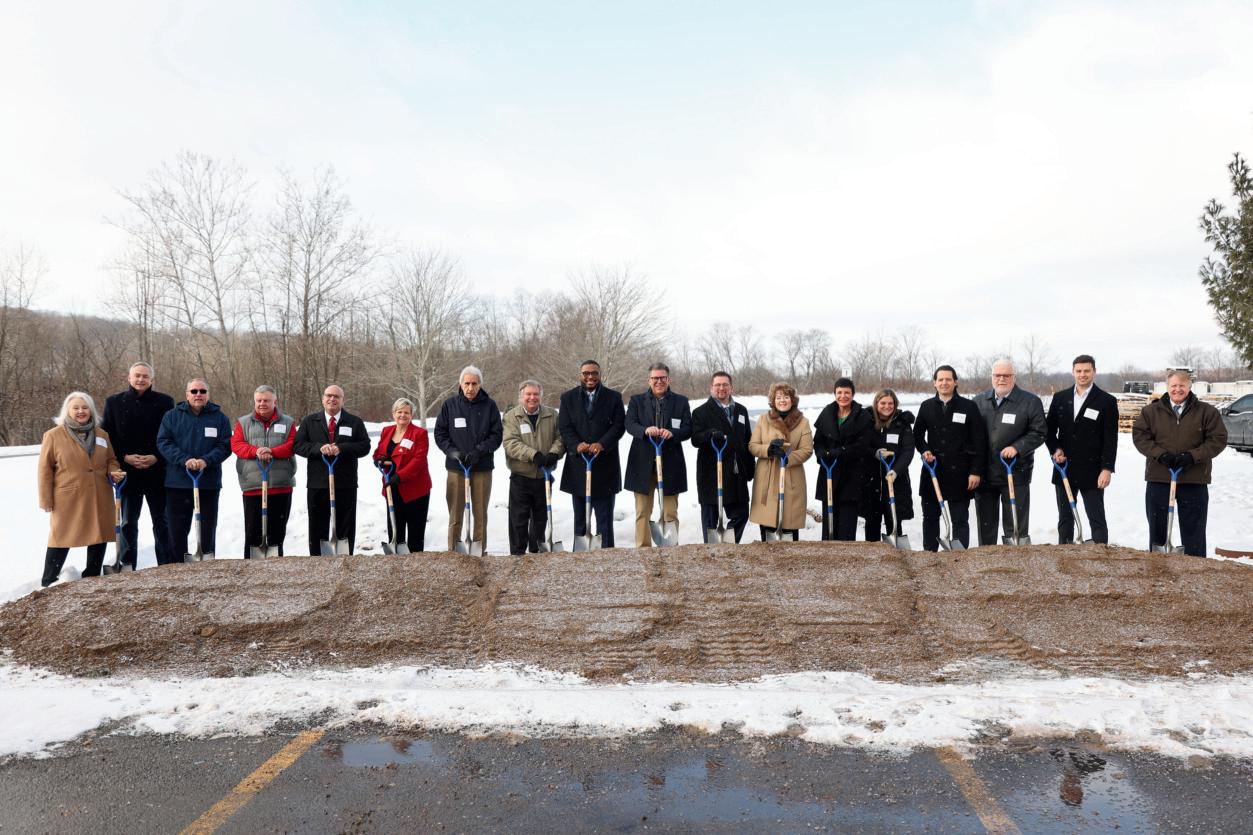
“I would highly recommend MacDonald Illig for any environmental legal work, whether for economic development projects or private developers. Their professionalism, quick response times, and deep knowledge of the law far exceed anyone I’ve worked with in the past. I’m truly grateful for all their support on our recent sale of industrial land in Neshannock Township.
Thanks to Attorney Bob Gandley’s expertise and responsiveness, we closed on time paving the way for a 300,000 square foot industrial warehouse that will bring approximately 70 new jobs to the area.”

- Ben Bush, Executive Director at Lawrence County Economic Development Corporation
Call: (814) 870-7600 or visit: macdonaldillig.com
MacDonald, Illig, Jones & Britton LLP 100 State St. Suite 700, Erie, PA 16507



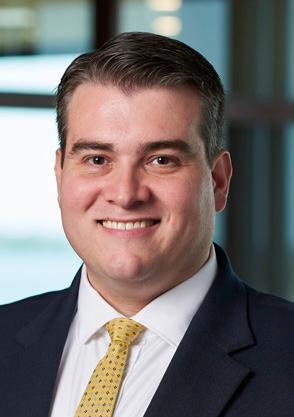
Brian Cressman is a partner at MacDonald Illig Attorneys and a member of the firm’s Business Transactions, Trusts & Estates, Real Estate, and Education Law Practice Groups.
While manufacturing remains a core industry in northwest Pennsylvania, the region is scattered with rusty, dusty and dilapidated buildings marking the landscape with remnants of its booming industrial past. As factories closed, the population in the City of Erie declined dramatically. These vacant facilities in Erie aren’t unique and now characterize the “rust belt” moniker attributed to the once prosperous industrial heartland of America.
The region has made significant progress through the use of a myriad of economic development programs to rehabilitate the region, making it a better place to work and live to both attract new employers and retain existing ones. However, the progress has been slow and uncertain, as population continues to decline and projects take, often times, decades to plan and execute.
The landscape of economic development in northwest Pennsylvania, however, has recently changed.
In December, Erie received state approval for the creation of a City Revitalization and Improvement Zone (“CRIZ”) — the first such approval for any community in western Pennsylvania. The CRIZ is an area of approximately 130 acres within the City of Erie. Over the 30 years of its existence, an estimated $15 million a year (adjusted annually for inflation) of tax revenue will be captured and returned to the CRIZ for eligible projects. The result will be steady and continuous investment in economic and community development at a level the region has never seen, spurring additional public and private development and freeing up non-CRIZ economic development dollars that would have been used in the zone to be used elsewhere in the region.
While development in the CRIZ is limited to 130-acres within the City of Erie, this development will help make the region a better place to work and live, allowing us to shake our rust belt identity and have a rippling effect throughout the region.
CRIZ funds may be utilized for commercial, mixed-use, industrial, recreational, sports, hospitality, conference or office projects and related infrastructure within the zone, as well as to purchase new equipment for a business in the zone. Taking into account
the minimum private match of at least $1 to every $5 of CRIZ funds, a minimum of $18 million of development will occur each year for the next three decades. Adjusted for inflation, the level of investment over the next 30-years could reach over $1 billion. Moreover, this economic impact could be “front loaded” through the issuance of bonds supported by the CRIZ funding stream.
This level of investment will not only accelerate projects, but also allow for economic and community development at a level and quality not previously possible. Think bigger. Think better. Think of the places you’ve visited with vast amenities, cutting-edge infrastructure and a robust, growing economy and population. Why not here? We have breathtaking outdoor spaces, robust cultural and historical offerings, quality education and healthcare systems, and, compared to many places, we have a low cost of living and low cost of doing business. The CRIZ can be a catalyst for the transformation of the region.
Ideas that once may have been considered daydreams, can now become a reality. Projects that could not otherwise pencil out, now, with the support of CRIZ funding, are feasible. The CRIZ can accelerate growth and revitalize the region by developing projects at a level not previously possible, attracting new businesses, creating jobs and growing our population.
Beginning in October 2026, and each year thereafter for the next 30 years, the CRIZ authority will receive funding. If that funding is not budgeted, allocated or appropriated by the end of each year, it must be sent back to the state. The CRIZ needs a pipeline of projects to effectively utilize funds over the lifespan of the program. The community must plan now for the influx of investment to come. Think big, think better and bring proposals to the CRIZ Authority.
MacDonald Illig assisted in organizing and obtaining state approval for the CRIZ and serves as its solicitor. Please contact the CRIZ authority if you have any questions, or learn more about the CRIZ at eriecriz.org.
GANNON UNVEILS COMMUNITY
ARTWORK PROJECT AT GREENHOUSE, ANNOUNCES TINY FOREST
The Gannon Greenhouse Community Artwork Celebration on May 1 showcased the results of a collaborative art project that brings together the Gannon community, neighbors and local artists in Erie, Pennsylvania to beautify and energize the space around the Gannon Greenhouse, according to a press release.
The fence sculpture, titled “The Streets of Our West Bayfront,” was designed and fabricated by The Looking Glass Art Project, a community based initiative that uses public art as a platform for dialogue, connection and revitalization. The artwork reflects the unique identity and aspirations of the neighborhood, turning a simple fence into a shared canvas of community pride.
Shaped by community input, it reflects themes of home, nature, neighborhood and sustainability — values shared by both the Gannon Greenhouse and Project NePTWNE, Gannon’s water quality improvement initiative.
Eleven of the panels represent a north-south street in the Our West Bayfront neighborhood — Cranberry, Raspberry, Cascade, Plum, Liberty, Poplar, Cherry, Walnut, Chestnut, Myrtle and Sassafras.
“This project is about so much more than art,” stated Sherri Mason Ph.D., director of Project

A new splash of color is now proudly displayed in Erie’s West Bayfront as Gannon University hosted a celebration for the unveiling of community-inspired artwork that will line the fence of the Gannon Greenhouse property.
NePTWNE. “It’s about people — about what we can create when we come together with a shared vision for beauty, hope and growth. Each panel tells a story of connection, and each panel reflects the spirit of a neighborhood we are proud to call home.”
The artists from The Looking Glass Art Project are Thomas Ferraro, Edward Grout and Steve Mik. Much of the fabrication of the panels was completed by the Gannon Makerspace. Installation of the artwork was supported by Building Systems, Inc.
Gannon University, in partnership with ReLEAF — a project of the Lake Erie Arboretum at Frontier Park — also announced the addition of a Tiny Forest coming to the lot on the corner of West Third and Myrtle streets.
Tiny Forests are small but mighty, densely packed, biodiverse pockets of native trees that grow quickly to help improve air quality, manage stormwater and create critical habitat for local wildlife.
For more information, visit gannon.edu.

At Erie Federal Credit Union, we believe in building relationships that make a difference.
Welcome Matt and Paul!
Our
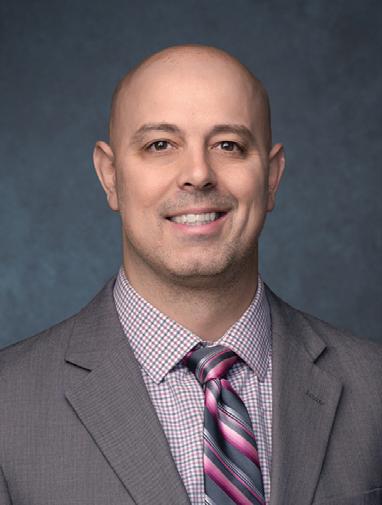
Matt Feleppa
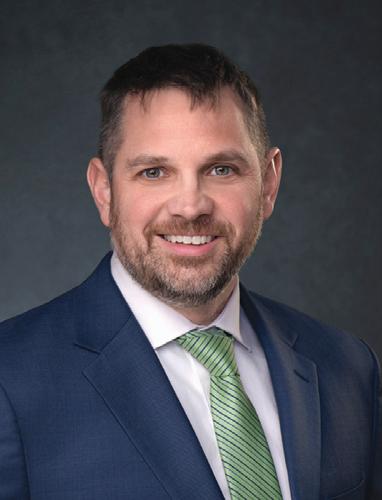
Paul Kruszewski
EUMA NAMES SZKLENSKI AS CHIEF PROGRAM OFFICER

Erie United Methodist Alliance (EUMA) recently welcomed Danielle Szklenski as its new chief program officer (CPO).
In this role, Szklenski will lead EUMA’s growing program department in its efforts to deliver services to northwest PA neighbors at risk of homelessness and those who are homeless. She will work closely with the EUMA’s chief executive officer to set programmatic strategy, identify internal and external opportunities to expand EUMA’s work, deepen its impact and supervise program directors to end homelessness.
Szklenski previously served as vice president of development and vice president of programs at Family Services of NW PA. She has decades of program leadership skills and education, including certification as a Six Sigma/Lean Operations – Green Belt, and Blue Ocean Strategy training.
According to Szklenski, “EUMA’s mission to end homelessness in northwest PA resonates deeply with me. I have a strong commitment to housing-related work. I am keenly aware of the need for more safe, affordable housing in our community and look forward to lending my support to this effort.”
Szklenski’s service has been recognized to include the Patriotic Supervisor Award presented by the National Committee for Employee Support of the Guard and Reserves; the Nonprofit Excellence Award for Diversity, Equity and Inclusion (2023); and the Silver Niagara (2022, 2023, 2024) and the Gold Niagara Award (2023) presented by Public Relations Society of America NW PA.
PAPE NAMED NEW EXECUTIVE DIRECTOR OF THE ERIE PHILHARMONIC
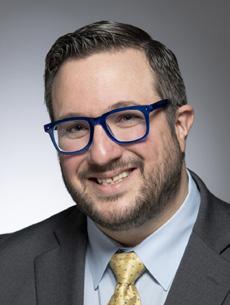
The Erie Philharmonic Board of Directors recently named Bobby Pape as its new executive director. Pape began his new role on June 2.
Pape brings to the Erie Phil over 15 years of experience in the nonprofit performing arts sector. Since 2023, he has served as executive director of Blue Heron, a professional early music chamber ensemble based in Boston. Prior to that, he was a senior member of the leadership team at the Albany (New York) Symphony, where he oversaw development and marketing, and helped guide the organization through the challenges of the pandemic.
“I am honored to be joining Music Director Daniel Meyer and the musicians, board,
staff and volunteers of the Erie Phil,” Pape said. “Erie is a vibrant city that embraces the transformative power of music, and I look forward to building on the Phil’s historic legacy of outstanding performances, impactful education programs, and meaningful community engagement.”
Pape has a regional connection to the area having grown up outside of Rochester, New York. He studied journalism and worked in the music department at the State University of New York at Buffalo and started his career in arts management at the Buffalo Philharmonic Orchestra.
Knox McLaughlin Gornall & Sennett, P.C. (Knox Law) recently announced that Bryan Baumann, Mark Claypool, Neal Devlin, Guy Fustine, Frances McCormick , Tom Tupitza, Tim Wachter, and Mark Wassell have all been selected for inclusion on the Pennsylvania Super Lawyers® list for 2025.
Additionally, five attorneys have been selected for inclusion on the 2025 Pennsylvania Super Lawyers® Rising Stars list: Jacqueline Brangard, Alex Cox , Bill Helbling , Matt Lasher, and Philip Seaver-Hall
According to the website Super Lawyers® “is a rating service of outstanding lawyers who have attained a high-degree of peer recognition and professional achievement.” The selection process can be found at https://www. superlawyers.com/about/selection-process/. No more than 5 percent of lawyers in the state are named to the list.
“Rising Stars” candidates must be either 40 years old or younger, or have practiced law for 10 years or less. No more than 2.5 percent of lawyers in the state are named to this list.
Knox Law was founded in Erie in 1958. Clients include a wide array of businesses, public entities, and nonprofits, as well as individuals and families.
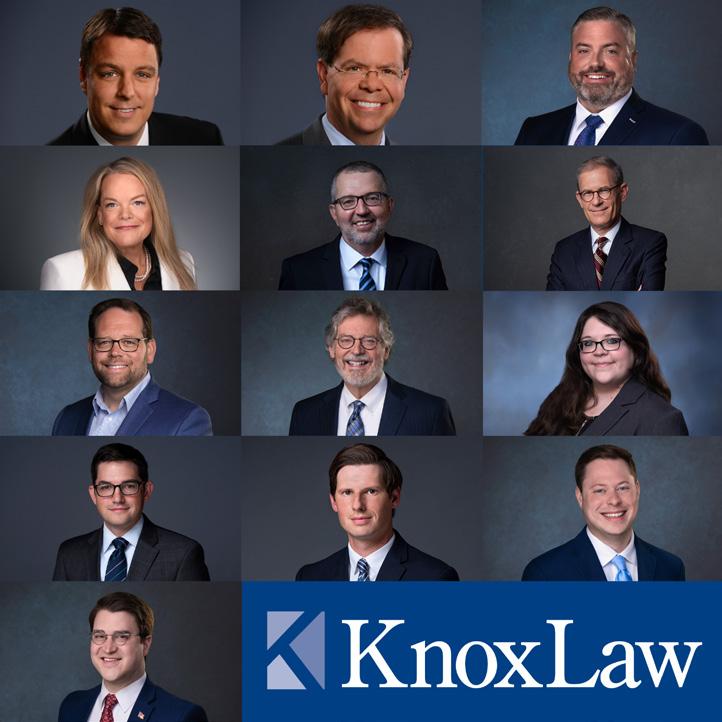
SCOTT ENTERPRISES PROMOTES YOUNG TO RESTAURANT DIVISION DIRECTOR
Scott Enterprises has announced Todd Young’s promotion to director of the restaurant division. In this role, he will lead operations across the company’s expansive portfolio of restaurant brands.
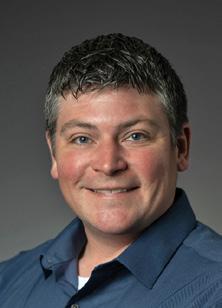
Young has been with Scott Enterprises for more than 20 years, having celebrated his milestone anniversary with the company in January 2025. He began his career as a dishwasher at the Applebee’s in Meadville, Pennsylvania, and has demonstrated exceptional growth, resilience and leadership.
Over the past two decades, Young has held several impactful roles, including general manager of the Peach Street Applebee’s and Oliver’s Rooftop. He has led operations at Oliver’s since 2020. He has brought energy, vision, and an unwavering passion for hospitality in every position. His ability to inspire teams and consistently deliver results has made him a standout leader.
In his new role, Young will oversee operations for a diverse lineup of brands under the Scott Enterprises umbrella, including Oliver’s Beer Garden, Oliver’s Rooftop, IHOP, Quaker Steak & Lube, Dunkin’ Donuts, Roma’s Italian Kitchen, and five Applebee’s locations. His leadership will drive continued innovation, operational excellence and guest satisfaction across all locations.
“Todd’s journey with our company is nothing short of inspiring,” said Nick Scott Jr., owner and vice president of Scott Enterprises. “His dedication, leadership and deep understanding of the hospitality business have impacted every brand he’s touched. This promotion is incredibly welldeserved, and I’m excited to see how Todd continues to elevate our restaurant division. We’re lucky to have him at the helm.”
Founded in 1957, Scott Enterprises is a family owned hospitality company based in Erie, Pa. Its diverse portfolio includes hotels, restaurants, salon spaces and regional attractions such as Splash Lagoon Indoor Water Park Resort in Erie, Pennsylvania, and Peek’n Peak Resort in Clymer, New York. The company is committed to investing in the revitalization of Erie and the surrounding area. With a team of more than 2,000 full-time, part-time and seasonal employees, Scott Enterprises is dedicated to providing exceptional service, enhancing guest experiences and supporting the local community.


Eileen Anderson is the director of Government Relations at The MBA. Contact her at 412/805-5707 or eileenanderson@ mbausa.org.
Energy costs can be a significant portion of any business operation and in certain energyintensive industries, these costs account for more than 50 percent of total operating costs. Pennsylvania has historically been an energy exporter due to the richness of traditional sources such as coal, oil, hydroelectric, nuclear and natural gas. Traditional sources and renewable energy sources such as solar, wind, hydro, biofuels and biomass form a diverse portfolio of energy sources.
When we flip the light switch, we expect the light to go on. That is a reasonable expectation for the following reasons:
• Pennsylvania is a national leader in energy production and export, especially for natural gas and nuclear power.
• Pennsylvania is the second-largest net supplier of energy to other states, trailing only Texas. Pennsylvania ranks second in natural gas production (after Texas), second in nuclear electricity generation (after Illinois), third in coal production (after Wyoming and West Virginia)
• Pennsylvania is a major energy exporter, supplying large amounts of electricity and fuel to the Northeast.
• Pennsylvania is a significant energy producer, outpacing many countries, and is responsible for a notable share of global energy output.
There are three critical challenges we face today:
The First Challenge is the need for increased power generation for the PJM interconnection* electricity grid which is driven by the increased electrification of everything: homes, buildings and vehicles. That is coupled with the new growth of energy-intensive industries like data centers, cryptocurrency mining and the reshoring of key manufacturing. Our electricity supply is not keeping pace with this rising demand. In fact, it is decreasing, potentially leading to future shortfalls in the PJM Interconnection region.
* PJM is a regional transmission organization that operates the electricity grid and coordinates the wholesale electricity market for 13 states.
The PJM grid issue could be solved if Regional Greenhouse Gas Initiative (RGGI) was repealed, and Pennsylvania avoided future cap-andtrade program that deflects investment to neighboring states. Developers of natural gasfired power plants have said they will not build in Pennsylvania as long as RGGI (or anything similar) remains a possibility. Timing is critical. Electricity shortages are possible in the next few years while building out a power plant is a large, timely endeavor.
The Second Challenge is the push to transition from fossil fuel to renewables. Meeting these growing energy demands and making a thoughtful transition are crucial
for Pennsylvania’s economic prosperity. For example, retiring a power plant to improve the environment may easily compromise the reliability of the grid. It has to be done only when suitable and sufficient replacement resources are in place. The acceleration of fossil fuel plant retirements, coupled with long construction timelines for cleaner alternatives, means Pennsylvania needs to find a way to bridge the gap amid a projected 20-percent rise in energy demand over the next four years. Take note that Pennsylvania, at least for now, is where 25 percent of the power necessary to run the PJM grid is generated.
The Third Challenge is the creation of a comprehensive statewide energy plan focusing on innovation and the pursuit of an all-of-the-above energy policy. As energy intensive-industries flock to Pennsylvania, their needs can be addressed in a way that complements, rather than compromises the PJM electricity grid.*
To solve the problem of power generation, we must invest in grid reliability while simultaneously moving toward a cleaner and more sustainable energy future. The MBA understands that reducing our carbon footprint is challenging and will involve innovative solutions, practices and technologies from the private sector.
The MBA also supports balanced policies that allow producers and suppliers from all energy sectors located in our Commonwealth to compete and enable business to secure a reliable and affordable supply of energy.
Read the full position and proposal at https:// mbausa.org/wp-content/uploads/2025/05/MBA2025-ENERGY-State-Position-and-Policy.pdf.
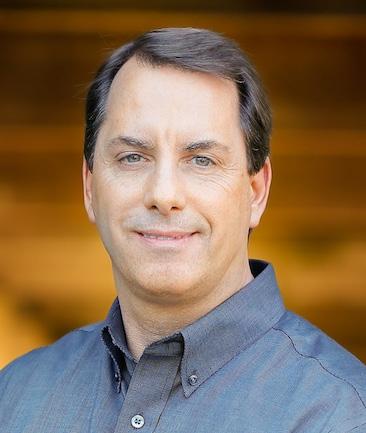
Jeff Grejda is one of 5’s most experienced Energy Advisors. His 30 years of industry experience spans both the supplier side and the consulting side of the energy business, including his previous roles with Shell Energy North America, Pepco Energy Services, Constellation Energy, and APPI Energy.
Grejda’s clients receive comprehensive energy management advice that includes help with procurement, demand-side management and sustainability guidance. Clients include large real estate portfolios, manufacturers and businesses across the United States. For more information, visit energyby5.com.
If you’ve been looking at your electric bill and wondering why it’s so high lately, you’re not alone.
Decisions made by PJM are one of the main reasons utility bills have soared in recent years. PJM stands for the PennsylvaniaJersey-Maryland Interconnection, a nonprofit organization that manages the electricity grid and operates wholesale electricity markets in a large portion of the Mid-Atlantic and parts of the Midwest and Southeast.
$0.180








In the latest auction, capacity costs in the PJM Interconnection surged by approximately five times, creating unprecedented cost increases across its 13-state footprint. These higher costs will impact the 2025–2026 planning year (June 2025 through May 2026), and every electricity supplier must pay these new capacity obligations, which started to be passed on to consumers in June. The magnitude of this increase represents one of the most significant cost adjustments in PJM’s history.
The PJM capacity auctions are intended to ensure adequate electricity generation to meet future demand and prevent blackouts. Capacity costs are advance payments to generators ensuring units run during peak demand. A client’s capacity costs are based on peak demand (in kW/month), and capacity represents a significant component of retail electricity rates.
Depending on your electricity contract and product structure, electricity suppliers may use several mechanisms to ensure that the increased capacity costs are reflected in your bills:
1. Contractual Pass-Throughs
• Many customers choose electricity agreements that include pass-through provisions, allowing suppliers to adjust rates when capacity costs change.
• These contracts avoid premiums for “fixing” the capacity component but pass on capacity charges at cost to the customer.









likely still see adjustments if their agreements contain capacity cost adjustment clauses.
• The most common clause is the Change in Law provision that allows suppliers to pass through required costs that were not known at the time of contracting.
• Should the following apply, customers should be prepared to see their rates increase:
1. A fixed price electricity agreement that was executed prior to the last auction (July 31, 2024), and;
2. That fixed price agreement also covers the period of the new auction’s planning year (June 2025–May 2026).
• Customers who locked in fixed rates after the latest auction should not see any cost adjustments for the June 2025–May 2026 period as the known costs for capacity should have been incorporated into your fixed rates. If your fixed agreement goes beyond May 2026, you could potentially still see adjustments based on the next auction’s results.
3. Tariff Adjustments for Utility-Supplied Customers
Customers receiving electricity supply from the local utility will experience tariff changes or rate filings to reflect the increased costs.
STRATEGIES TO MITIGATE COST INCREASES
• Manage Capacity Tags: Particularly for capacity pass-through products, customers who can reduce their cap tags will materially lower their costs.
For these customers, the new capacity costs will be assessed on their new capacity tags (i.e., each customer’s capacity obligation as determined by PJM) beginning on their June invoice.
• Customers with fixed-price contracts will
• Upgrade Your Procurement Strategy: Moving forward, make sure you’re on the best product to avoid costly premiums and allow you to squeeze the most out of other demand management strategies.
STILL NOT SURE WHAT TO DO? WE’RE HERE TO HELP!
Navigating capacity cost increases can be complex, but you don’t have to do it alone. 5 is an energy procurement partner to The MBA that specializes in helping businesses manage energy costs and optimize their procurement strategies. Please reach out to Judy Rosatti at The MBA at 814/833-3200, 800/815-2600 or jrosatti@mbausa.org to discuss how these changes impact your business and explore proven solutions to mitigate rising costs.

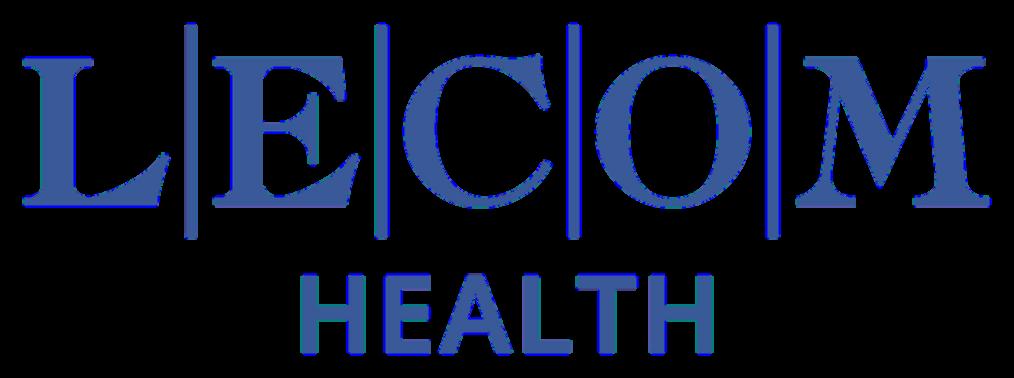






Maintaining a safe operation in the nonprofi t and education sectors has many unique challenges. When an organization has tight budget controls and limited safety staff, one of the most prudent strategies is to first focus on preventing fatal and life-changing injuries, as these are the most damaging from ethical and business perspectives.
When they occur, life-changing accidents tragically impact entire teams, families and communities, and organizations often have a difficult time bouncing back. In 2023 alone, more than 5,000 workplace fatalities were reported in the United States, making continued focus on prevention more critical than ever, according to the U.S. Bureau of Labor Statistics (https://www.bls.gov/news. release/pdf/cfoi.pdf ).
Several patterns emerge when examining the precursors to the most serious accidents. These include teams with limited experience, working under time pressure, performing tasks outside their usual scope, or work that involves high states of physical energy, such as heat, light, electricity, pressure, gravity or chemical reactions. Additional risk factors include using vehicles and equipment, working at heights, distraction, fatigue or complacency. Anticipating and recognizing these precursors is essential to preventing severe accidents. Employee safety cannot be an afterthought.
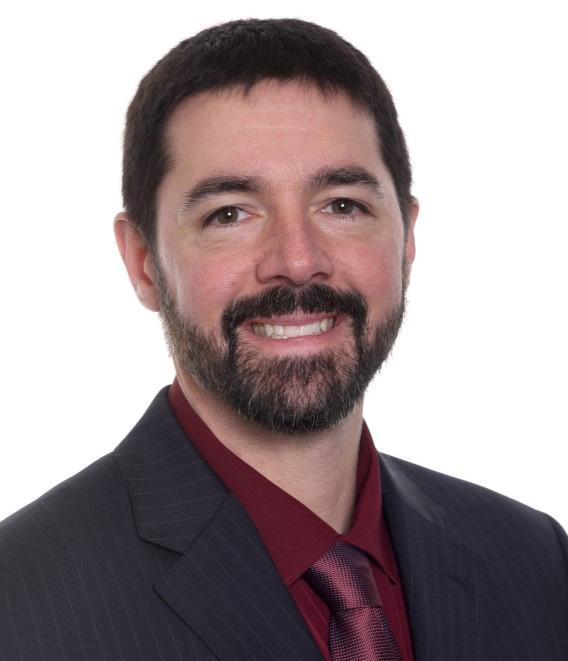
Pre-planning is a critical investment that helps an organization define its responsibilities, evaluate available resources, and ensure the necessary knowledge and competencies are in place to safely execute a project, operation or safety-sensitive task. Equally important, engaging employees and implementing feedback mechanisms provide valuable insight into how effectively safety programs and policies are followed in real-world settings. Many organizations miss the opportunity to collect employee feedback, assuming managers close to the operation have a good pulse on the time and production pressures employees face every day. Unfortunately, how organizations imagine work when writing policies and programs often doesn’t reflect how tasks are performed under actual working conditions.
Changing a culture is difficult. It takes time, patience, and a give-and-take mentality from line workers and managers across an organization. By understanding employee perceptions and designing safety programs that fit production goals, we know that the resultant safety measures are more likely to be followed and effectively protect workers.
Matthew S. Klunk, CIH, CSP, supervisor of Regional Risk Management, joined Eastern Alliance Insurance in 2008. He earned Bachelor and Master of Science degrees in Safety Sciences from Indiana University of Pennsylvania and is a certi fied safety professional and certi fied industrial hygienist. Visit easternalliance.com for more information.
REPORT: MORE EMPLOYERS UTILIZING VOLUNTEER PROGRAMS FOR ENGAGEMENT
According to incubator and resource hub Benevity Impact Labs’ report on “The State of Corporate Volunteering,” there’s been a 15-percent increase in the prevalence of companies running volunteer programs for employee engagement. The 2024 data also shows a 57 percent year-over-year increase in the rate of global employee volunteering participation and a 41 percent yearover-year increase in the total number of volunteer hours performed by companies and their employees.
In addition to increased engagement, the report states that corporate volunteer programs lead to improved brand image, enhanced recruitment and retention and happier employees.
Often part of a company’s corporate social responsibility initiatives, a corporate volunteer program is a formalized avenue for a company’s employees to donate time and talents to an organization. Corporate volunteering programs can be set up in numerous ways. Common corporate volunteer programs include:
• Paid time off for employees to volunteer at an organization of their choice
• Day of service programs, where employees volunteer together (Earth Day cleanups, Habitat for Humanity builds, etc.)
• Skills-based volunteering, where employees use their professional expertise to help nonprofits
To learn more about ways to get involved in corporate volunteering and outreach efforts, attend The MBA’s Nonprofit, Education and Economic Development IMPACT Luncheon & Fair on Thursday, July 31, at the Association in Erie. Visit mbausa.org for details and to register.



23 W 10th Street, Suite 3
Erie, PA 16501
Phone: 814/455-1375
eriephil.org

For more than a century, the Erie Philharmonic has been recognized nationally as one of the country’s most esteemed professional ensembles, standing out prominently among orchestras its size. The Philharmonic continues to serve as a cultural cornerstone and community catalyst, reaching more than 50,000 people each year through both concerts and expansive outreach programs. The Erie Philharmonic’s mission is to strengthen the community and region by providing high-quality live orchestra concerts and programs that enrich, educate and entertain people of all ages.
The resiliency, talent and cultural significance of the Erie Philharmonic to the region is undeniable, and through the past century, the orchestra has not only survived but thrived.
The Erie Philharmonic is dedicated to making music accessible for all individuals by breaking down perceived barriers to entry and shattering myths about classical
music — myths like musical performances are only for the elite or are enjoyed by “older crowds.” Through its performances and its programs, the Erie Philharmonic works to expand its outreach so all Erie residents can access and grow to love classical music. And it’s more than just the music — the Erie Philharmonic, under the leadership of Music Director Daniel Meyer, strives to embrace the curiosity of newcomers and attention of veteran guests alike.
The Erie Philharmonic is more than concerts.
A 2022 economic impact study shows the Erie Philharmonic generates $10.3 million in economic impact for the Commonwealth of Pennsylvania, with 86 percent remaining in Erie County. The organization also works with many local businesses, which means keeping revenue and job opportunities right here in this region. All of this is made possible through support from patrons, donors, sponsors, volunteers and local leaders.
The Erie Philharmonic is an essential part of Erie’s educational landscape.
The Erie Junior Philharmonic is one of the oldest youth orchestras in the country and continues to provide a world-class opportunity and experience to the young people of Erie. Many alumni perform across the country in professional orchestras, as well as right here in town.
The Philharmonic Chorus is a volunteer regional ensemble with more than 130 members each season. The Chorus also
supports three student choirs, which represent the fastest-growing vocal program in this area.
Through a variety of community programs such as in-school musician visits, Instrumental Petting Zoos, Pre-K classroom visits, annual Youth Concerts at the Warner Theatre for more than 6,000 students, and a popular summer concert series that takes the orchestra to many hometowns, the Erie Philharmonic creates life-changing experiences for all.
If you believe in the power of music to transform lives, the Erie Philharmonic invites you to experience the orchestra at the Warner Theatre, volunteer as an usher, sponsor a program or learn about other opportunities that help ensure its orchestra continues to serve Erie for generations to come.

WHICH TYPES OF EMPLOYEE BENEFIT PLANS ARE EXEMPT FROM THE FORM 5500 FILING REQUIREMENT?
Small welfare benefit plans that have fewer than 100 covered participants and are either unfunded, fully insured or a combination of both are exempt from the Form 5500 filing requirement. These exemptions help reduce the administrative burden on smaller employers maintaining simple benefit plans.
WHERE ELSE WOULD AN EMPLOYER GET ASSISTANCE WITH THE FORM 5500 FILING REQUIREMENT?
Employers can reach out to their benefit brokers, benefit service providers, finance departments or tax professionals who may assist with the data to complete the 5500 forms and assist with the process to complete filings.
HAVE AN HR QUESTION? GET ANSWERS!
As part of The MBA’s free HR and Legal Hotline, the Association offers members counsel on a broad range of workplace-related issues like:
• Hiring and firing practices
• Company policies Compensation and benefits
• Employment law
• Employment agreements
• Workers’ compensation
• Affirmative Action plans
Unemployment compensation plans
• Employee handbook policies
• Sexual harassment
• OSHA compliance
• Family Medical Leave Act
Americans with Disabilities Act
• COBRA
For answers to your HR and legal questions, members can call 814/833-3200 or 800/815-2660.

Form 5500 deadline is July 31 each year, and employers that are subject to the Employee Retirement Income Security Act of 1974 (ERISA) must electronically file an annual report (Form 5500) for each employee benefit plan they maintain unless a filing exemption applies. Employers with employee benefit plans that operate on a calendar year basis must file their annual reports for 2024 with the U.S. Department of Labor (DOL) by July 31, 2025.
• An employer may extend this deadline by 2.5 months (until October 15, 2025) by filing Form 5558 with the IRS by July 31, 2025. Small welfare benefit plans (fewer than 100 covered participants) that are unfunded or fully insured (or a combination of unfunded and insured) are exempt from the Form 5500 filing requirement.
• Employers that need extra time should file Form 5558 by July 31, 2025. As of January 1, 2025, Form 5558 can be filed electronically through DOL’s -EFAST2 or can be filed on paper with the IRS.
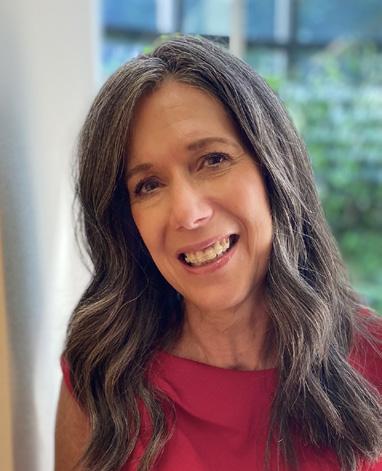
Kim Figurski
• Voluntary Compliance — The Delinquent Filer Voluntary Compliance Program (DFVCP) was created by the DOL to encourage plan administrators to voluntarily file overdue Forms 5500. The DFVCP gives delinquent plan administrators a way to avoid potentially higher penalty assessments by voluntarily completing their late Form 5500s for a year and paying reduced penalties.
• Plan administrators are eligible to use the DFVCP only if they make the required filings prior to being notified in writing by the DOL of a failure to file a timely annual report. Employers with calendar year plans that do not qualify for a filing exemption should work with their service providers to electronically file the Form 5500 (including required schedules and attachments) using the DOL’s EFAST2 electronic filing system by July 31, 2025.
is an HR consultant at The MBA. Contact her at 814/833-3200, 800/815-2660 or kfigurski@mbausa.org.

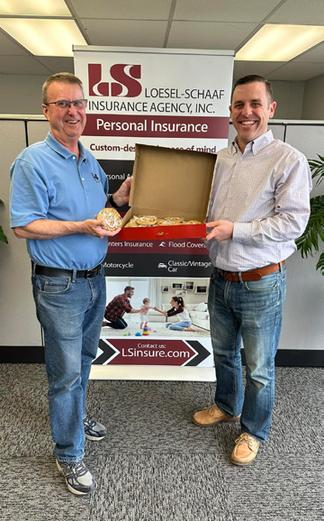
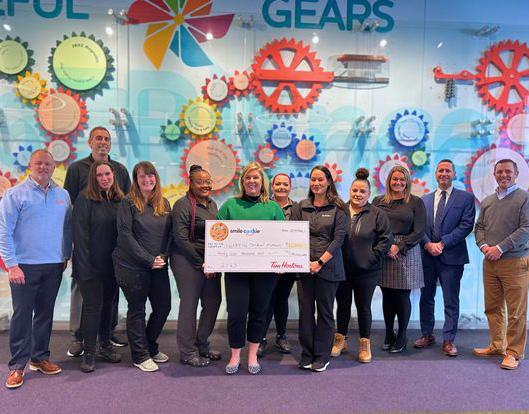
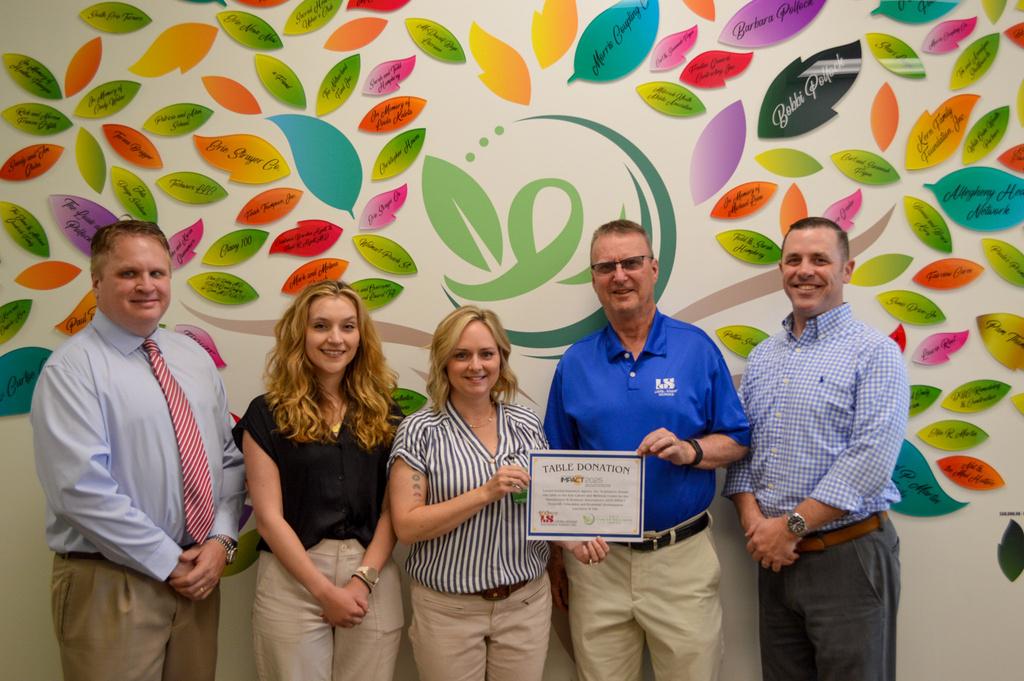

“At LSi, we have found a niche in helping insure non-profit organizations while mitigating risks to ensure financial stability for your specific mission,” says Board Chairman Doug Loesel. “Our goal is serving them so they can serve others ”
In today’s ever changing environment, risk is constant. Business insurance isn’t. We offer a complimentary review of your insurance programs to determine if coverage is adequate for your unique situation, providing peace of mind We thoroughly assess your business and situation to develop creative, comprehensive, cost-effective solutions that fit your needs.
Since 1925, we have had the opportunity to advise a variety of nonprofit organizations and have discovered common factors unique to you This has given us extensive experience and understanding within the Nonprofit Sector that will provide your organization with the solid support needed to protect your specific cause
Additionally, LSi has continued to support and give back to the nonprofit sector by not only serving on various boards, but its staff generously donates time and resources to help nonprofit clients and community. Congratulations to Erie Cancer Wellness, recipient of LSi’s sponsored booth for the MBA’s IMPACT Luncheon & IMPACT Fair!




Charitable organizations enhance our quality of life and help sustain a thriving, diverse, and inclusive community.
Knox Law applauds your contributions. We are pleased to support you with our resources and our volunteer service — it’s part of our commitment to a bright future.
Knox McLaughlin Gornall & Sennett, P.C. Erie | Pittsburgh | Jamestown, NY 814-459-2800 | www.kmgslaw.com
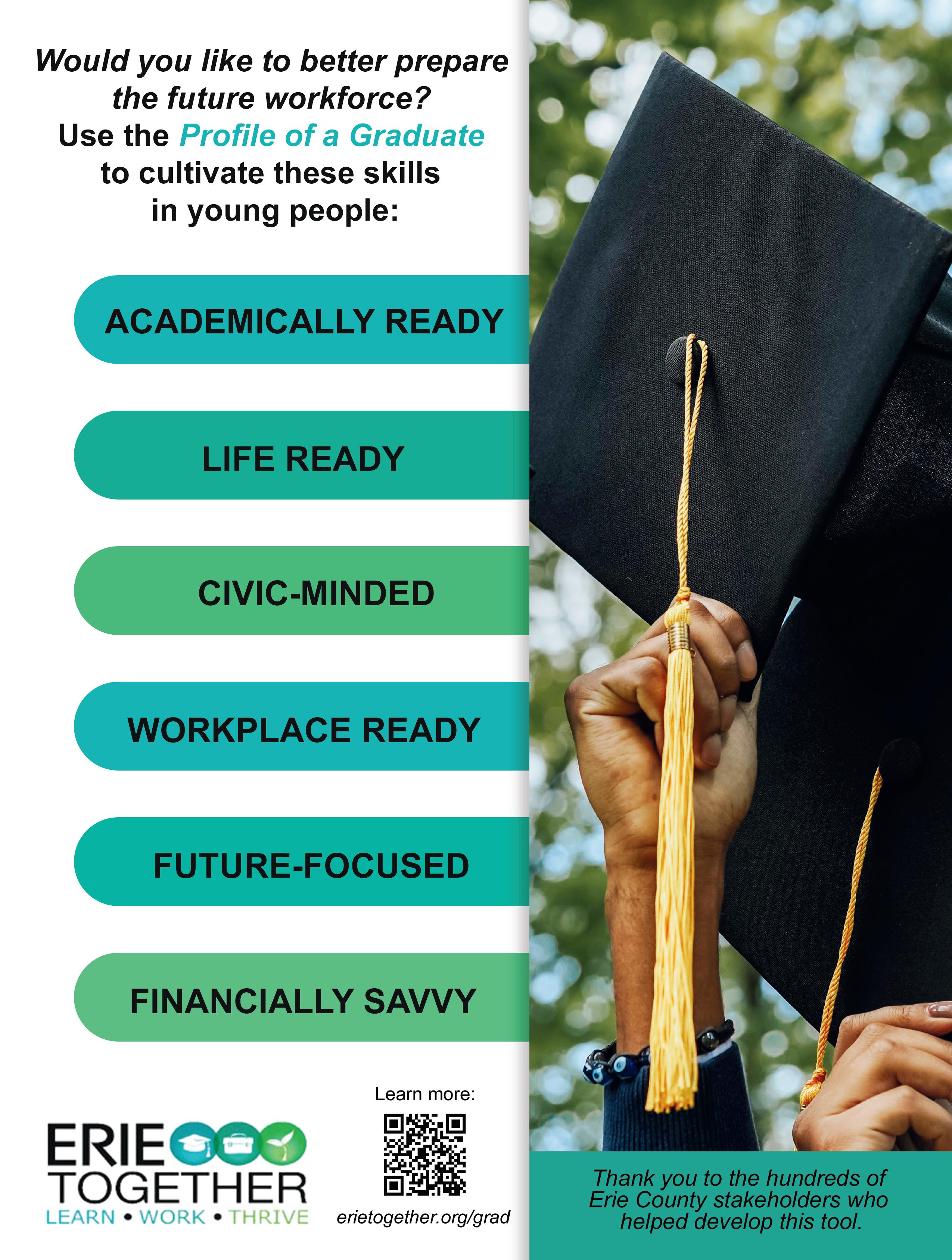

The Manufacturer & Business Association provides member companies with educational and networking opportunities throughout the region and meets regularly with members to learn about the opportunities and challenges they are facing. To learn more about The MBA’s upcoming events or to learn about the benefits of membership, visit mbausa.org.
The MBA hosted a manufacturing leadership panel discussion on May 8 as part of its 2025 Executive Speaker Series. Panelists included (from left): Jon DeArment, executive vice president of Manufacturing and Engineering at Channellock; J.R. Farrar, vice president and general manager of Eriez USA; Harris Halilovic, business unit manager – Aerospace and Defense, Parker Lord; and, Jim Novinsky, chief executive officer of Snap-tite Hose.
To help grow the local talent pool in the manufacturing space, The MBA, Butler County Manufacturing Consortium and Butler County Chamber of Commerce partnered to host the third annual Butler Manufacturing Day at Butler Intermediate High School on May 6.
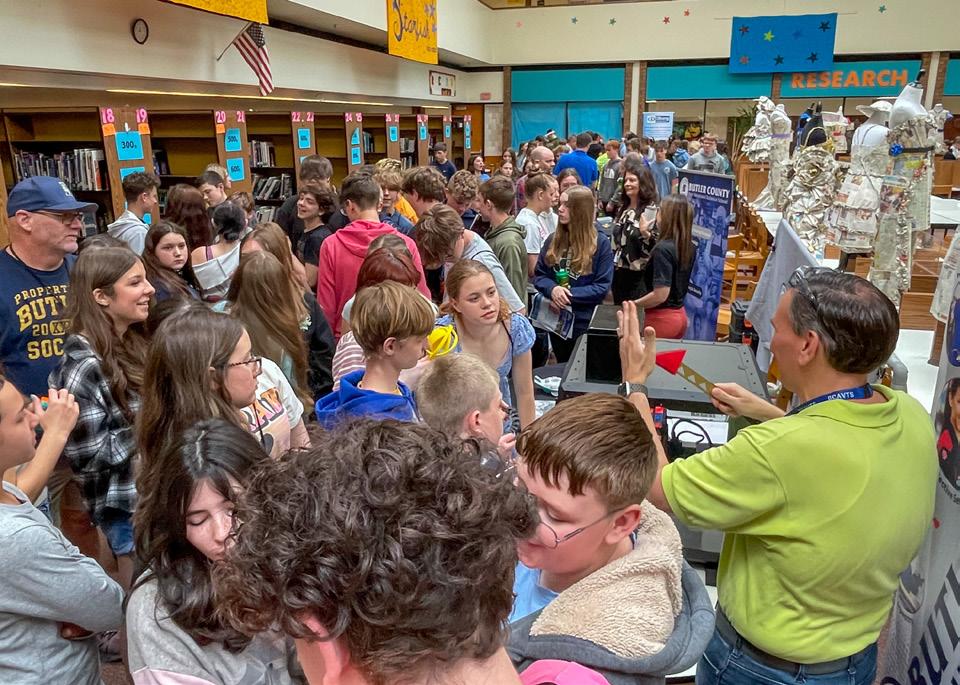


The MBA’s Judy Rosatti (center) presented an anniversary plaque to Paul Rankin (left) and Steve Seymour (right) of Country Fair in honor of the company’s 60th anniversary. What began as a single store in 1965 has grown into a network of over 70 locations — including its newest Flagship Store, which opened this year across from Perry Square in downtown Erie.
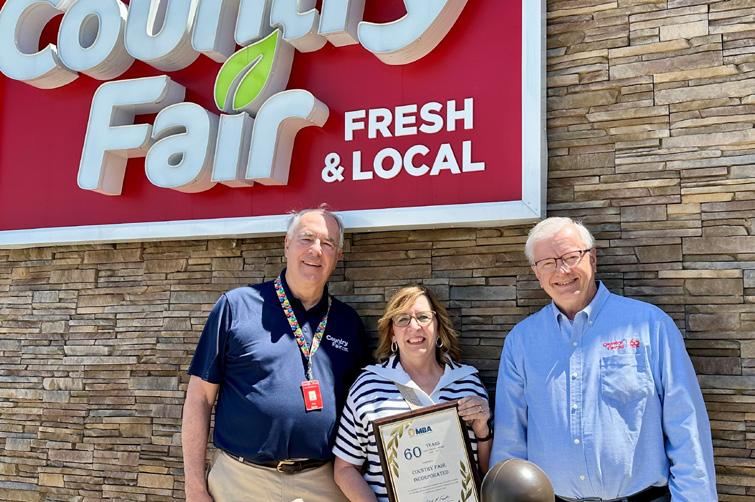


Economic Research Institute of Erie 20th Annual Conference
Wednesday, July 23 | 8:30 a.m. | Burke Center, Penn State Behrend
Join us to hear from national experts and local professionals on the challenges associated with adapting to structural and technological change. This is a must-attend discussion for business owners and executives, community leaders, and interested citizens.
For more information or to register for the conference, go to behrend.psu.edu/erieconference


